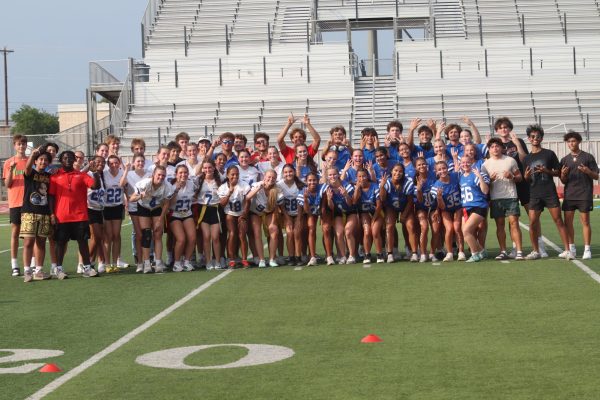The Making of Footloose
October 7, 2011
By Emma Berkel
It’s said that movie remakes never live up to the original, and while many will come to see a remake in honor of its predecessor, that same nostalgic factor can lead to a viciously negative reception. A mere rehashing of old material just doesn’t cut it and to create a successful remake is to enter into an ambitious fight against the odds. For that reason, many wonder what was going through Craig Brewer’s head when he settled into the director’s chair and set out to remake the 1984 cult classic Footloose.
As a musical movie that features the trials of teenagers in between sequences of song and dance, Footloose is today most comparable to Glee or High School Musical. The story follows Ren McCormack as he moves from Massachusetts’s urban jungle into the ultraconservative town of Bomont and rebels against the community’s restrictions on music and dance.
Back in ’84, as a city boy that often visited his extremely southern family, Brewer felt a special connection to the movie and to Ren’s plight as a fish out of water. For Brewer, it was inspiring to “see some guy stand up for his individuality… in a world that’s brutal.” To take on the remake and to work with the original film’s writer and producer, Dean Pitchford and Craig Zadan respectively, was a dream come true.
In addition to personal motivation, Brewer has a taste for musical complement, what’s necessary to make any musical movie successful, and a strong handle on the themes of sin and redemption, both of which play into Footloose. Brewer had every reason to take on a project he’d wholeheartedly adore.
For the lead role of Ren, Zac Effron and Chace Crawford (of Gossip Girl fame) were each prospective actors, but both fell through and an entirely new actor was brought in. Coming onto the project, Kenny Wormald was better known for his dancing career—which spans various genres and has taken him around the world—than for his acting. Footloose is his first big film, and for a movie with so much stress on the right to dance, he and his impressive talent was perfect.
According to Brewer, he and Wormald were “the only two guys that could have done it.”
In order to remake Footloose, Brewer knew that the original context had to be updated for the modern audience and its new generation of teens. New songs were added to the soundtrack and many of the original’s songs were revamped.
In order to heighten the sense of contrast between Ren and the town of Bomont, the fictional small town was moved from Utah to Georgia. The move brought out the distinction between Red State and Blue State in addition to better fostering Brewer’s creative affinity for the south. That same affinity can be found in other films of his such as Black Snake Moan and Hustle & Flow, both of which did well to portray a real south and for sure Footloose has followed suit.
Also resulting from the move to Georgia was the logical addition of color to the cast, primarily in the form of Ren’s friend Woody, the local high school’s African American quarterback. The addition served to break down the stereotype of a racist south.
Although the remake’s main conflict remains the same, the chief motivation that drives the controlling adults was shifted from a traditionalist nature to a parent’s heartfelt care, a care that at times can be taken much too far.
Footloose is set for release on October 14th, and given all the hard work and thought put into it, it should be more than worth the ticket price.






